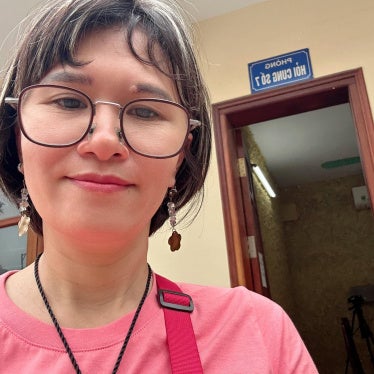(New York) - NATO forces in Afghanistan should immediately release the results of their investigation into a March 14, 2009, incident in which an 8-year-old girl in Kapisa province was burned by white phosphorus munitions, Human Rights Watch said today. A NATO spokesperson has denied allegations from the girl's father that NATO forces had fired the rounds that caused her injuries.
"White phosphorus causes horrendous burns and should not be used in civilian areas," said Marc Garlasco, senior military analyst at Human Rights Watch. "NATO should immediately make public the results of its investigation into this incident."
The girl's family brought her to the US military base in Bagram on March 14 for medical treatment for severe burns. US military doctors say they found white phosphorus on her face and neck. The incident took place in Alahsay district in eastern Kapisa Province, where there had been a series of fierce firefights in March involving NATO forces and insurgent groups.
NATO officials have said that according to their records, no rounds were found to have landed near the house, though have not denied using white phosphorus during this engagement. They have suggested that the Taliban may have fired the rounds, but have not provided any evidence for their claim. Today the International Security Assistance Force released information on four isolated incidents dated between December 2007 and May 2009 where they say insurgents used white phosphorus munitions.
Under international humanitarian law, chemicals such as white phosphorus can legitimately be used as "obscurants" to hide military operations and, in certain circumstances, as a weapon. However, white phosphorus munitions have a significant incendiary effect that can severely burn people and set alight fields, buildings, and other civilian objects in the vicinity. Human Rights Watch believes that the use of white phosphorus munitions in densely populated areas violates the requirement under international humanitarian law to take all feasible precautions to avoid civilian injury and loss of life.
The spokesman for the commander of NATO and US troops in Afghanistan, Brig. Gen. Richard Blanchette, confirmed that white phosphorus munitions are used in Afghanistan. He told Human Rights Watch: "We do not target personnel with white phosphorus, which is a conventional weapon in the arsenals of many nations, generally used for screening, marking, and illumination."
"NATO has not denied using white phosphorus during the Kapisa incident, nor have they provided evidence that the insurgents fired these rounds," said Garlasco. "NATO and US forces need to reassure the people of Afghanistan, already alarmed by high civilian casualties, that these munitions are not being used unlawfully."








